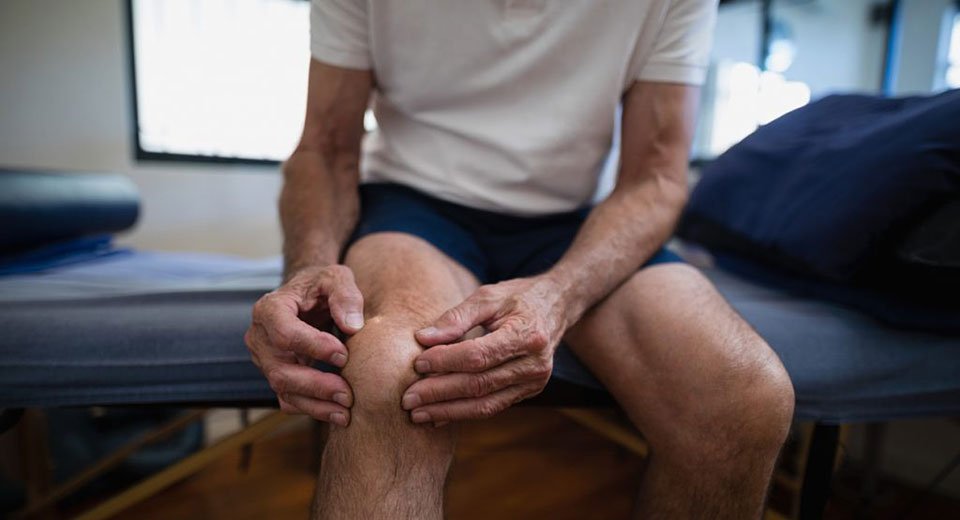Should you replace both knees at one time?
When two knees fail at the same time, it can be tempting to consider simultaneous knee replacement. You only have to make one trip to the hospital and you only undergo anesthesia and physical therapy once. It also ensures that you will actually replace both knees.
Even so, simultaneous knee replacement has been falling out of favor for the last five to 10 years, according to orthopedic surgeon Leonard Remia, MD, at Cape Cod Orthopaedics & Sports Medicine in Hyannis and Sandwich. A recently published study done over seven years in Canada that included close to 250,000 people has made surgeons like Dr. Remia think twice before performing simultaneous knee replacements.
“In the most recent study that came out there were several striking differences between bilateral knee replacements or either staged or single knee replacements,” he said. “The major difference was a higher incidence of cardiac complications within 90 days with bilateral total knee replacements.”
The surprising aspect was that the patients in the study who had bilateral total knee replacements were younger, healthier and usually men, Dr. Remia said. They should have had better outcomes, not worse. The same study also noted that of the patients who had bilateral knee replacement, 41 percent needed more blood transfusions and there was also a higher risk of pulmonary embolism.
“This study was pretty powerful,” Dr. Remia said. “A lot of doctors are now at least thinking critically about offering bilateral knee replacement, and certainly in older patients or patients with co-morbidities.”
Patients Goals Considered
Dr. Remia is willing to discuss double knee replacement and even do the surgery if a patient really wants it, but he screens them carefully. They have to be motivated, healthy, under 75 and not have any heart or lung issues. He also cautions that patients who have bilateral surgeries almost always have to go to a rehab facility for a week or two. A patient’s goals and expectations are a large part of the discussion about whether to proceed.
In his practice, Dr. Remia prefers to do staged knee replacements where one knee is replaced and then, six to eight weeks later, the second knee is done. The more recent use of nerve blocks and pain injection techniques during surgery means that patients with a unilateral knee replacement are in a lot less pain than those in the past, who just had general anesthesia. They are up and walking the same day as their surgery.
“They are very comfortable and the majority of them go home the following afternoon,” he said. “Once you get people up and moving the risk of blood clots goes down dramatically. That’s the whole point of getting people mobilized.”
In addition to using better anesthesia techniques, Dr. Remia also does minimally invasive knee replacements. He does not cut any muscles or tendons. He just cuts tissue and moves the muscles aside. The results are similar to those of a traditional knee replacement two years after surgery, but patients with minimally invasive knee replacements recover more quickly in the first few months in terms of muscle function and strength, he said.
Bilateral Hips Too
The only patients for whom a bilateral knee replacement is advisable are those whose knees are so compromised, the second bad knee won’t support the patient after the first knee is replaced.
“If we do one and they can’t hold their weight up on the other side, it’s going to be difficult to do rehab,” he said. “In that case, we may talk about bilateral knee replacement, if they are not super unhealthy and don’t have multiple co-morbidities and are not over the age of 75.”
After joint replacement surgery patients go home, they have a nurse and a physical therapist from a home health agency, like Cape Cod Healthcare’s VNA of Cape Cod, visit them daily for the first few weeks. They then finish their rehab as an outpatient at a local physical therapy office. Most people are done with physical therapy by the end of six weeks and can schedule their second operation then.
Even though bilateral knee replacements are much more common than bilateral hip replacements, Dr. Remia does perform double hip replacements in healthy patients because he uses an anterior approach, which makes the prosthetic hips more stable. He uses a special table, and patients lie on their back rather than on their side as they do with the posterior approach.
“The majority of patients who have their hips replaced have them done with the older approaches where you cut muscle and you cut tendon,” he said. “You disrupt things and your dislocation rate is 20 times higher with those operations. I don’t have a dislocation rate with the anterior approach. They are so stable. For me, that’s the benefit.”
